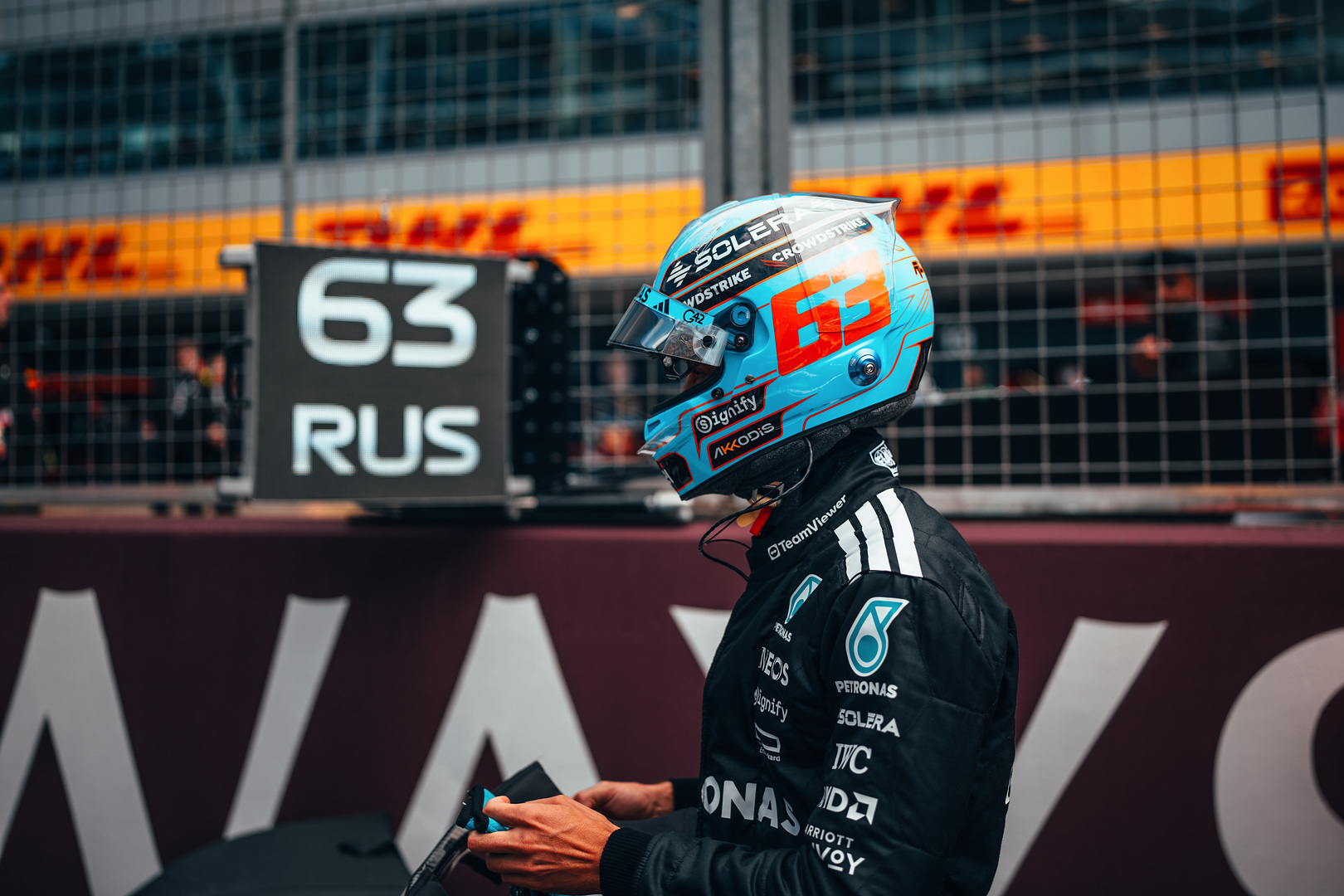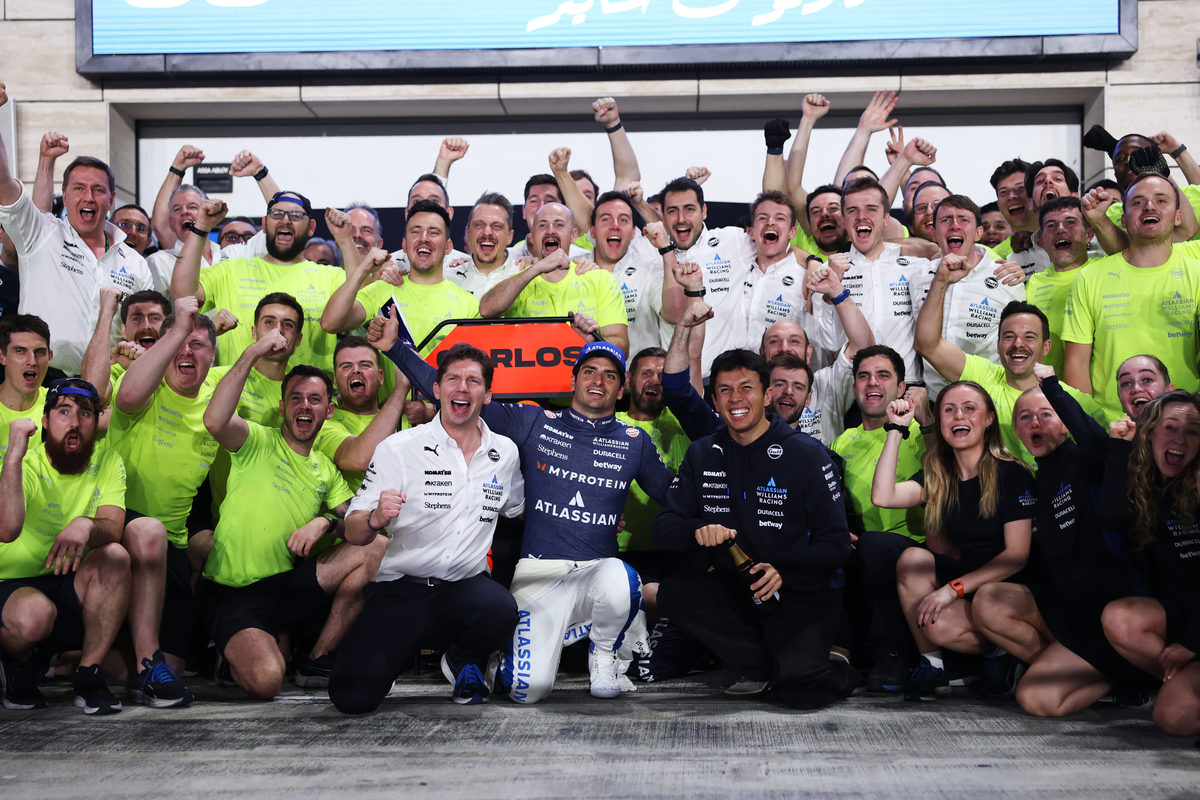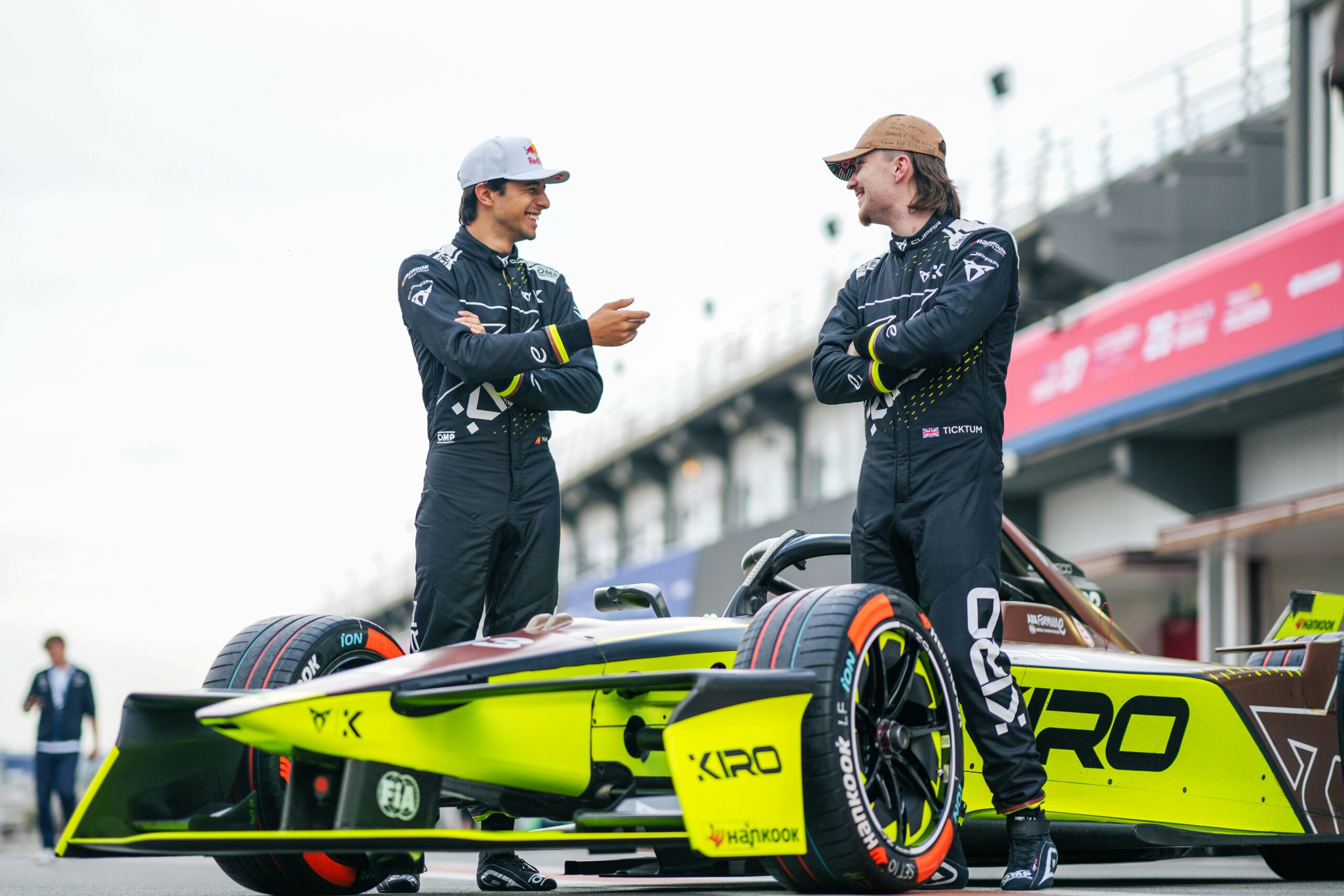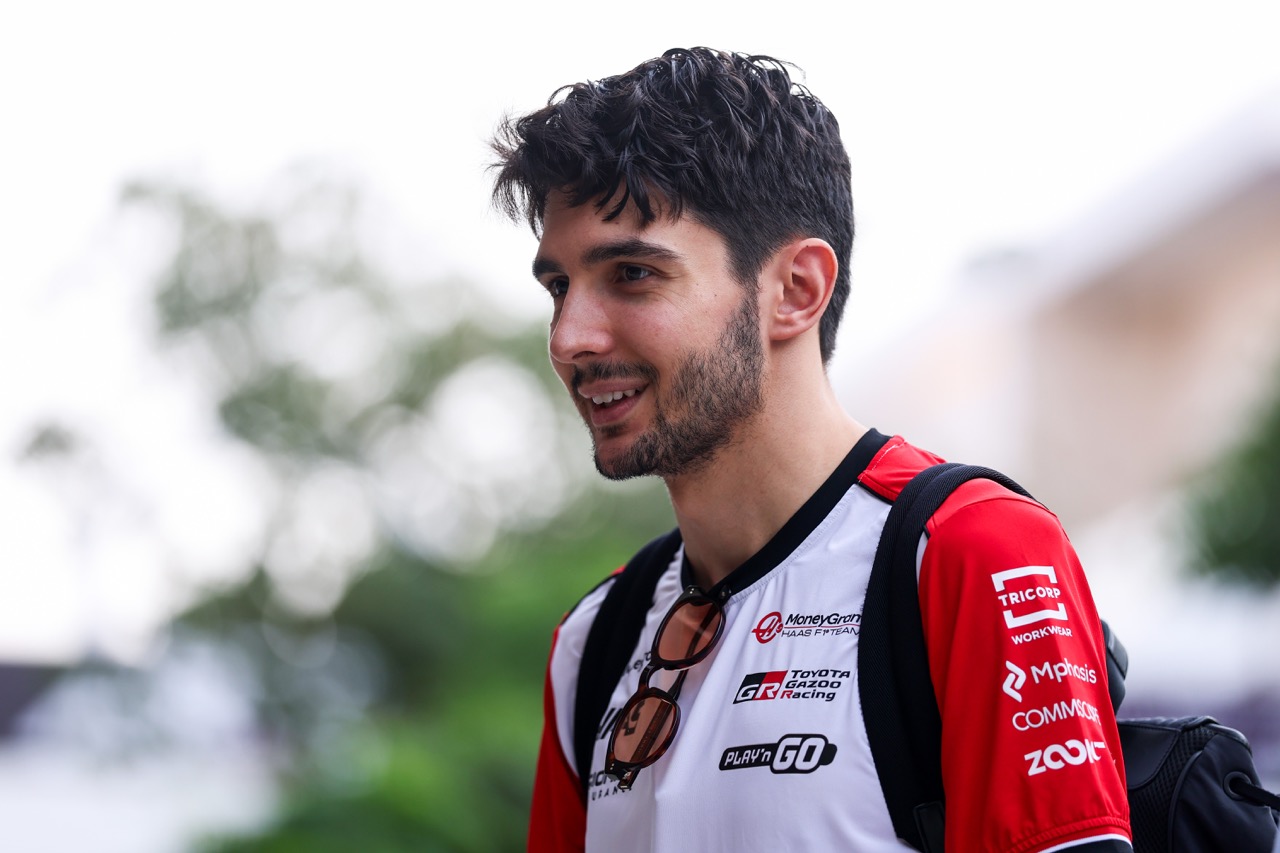George Russell’s F1 British GP weekend at Silverstone showcased how easy strategic gambles can spectacularly backfire. The Mercedes driver qualified 4th on Saturday, but ended the race in a disappointing 10th. His race featured bold pre-race decisions and risky mid-race calls.
Russell’s British GP strategy decisions included formation lap and late-race switches to the slick hard tyres. Russell’s candid post-race analysis revealed the harsh realities of F1 strategy.
The risk taking philosophy
Russell’s post-race analysis in the print media pen revealed harsh truths about F1 strategy with Mercedes simply lacking the fundamental pace of McLaren in particular.
“Luck is not on your side when the car is slow,” he stated. “It’s as simple as that. You have a fast car, you’re always lucky and things will always work out towards you.“
His philosophy centers on calculated risk-taking when they do not have the raw pace to go for a win.
“If you play it safe, you come home with a safe result. In our position that’s not really what excites us.“
Russell’s British GP strategy mistakes stemmed from Mercedes’ pace deficit this weekend.
“Of course there are decisions that went wrong from my side, from every side,” he admitted. “Was it a risk worth taking? Maybe.“
Formation lap gamble
The first crucial decision came before the race started. Russell pitted for slicks at the end of the formation lap. Five drivers made this call. The gamble did not pay off due to the immediate VSC periods that ruined their strategy.
“I think the decision in the beginning was not a bad decision,” Russell reflected. “It was dry for 25 minutes, but what we didn’t know is that we would have 15 minutes of virtual safety car.”
This early gamble established the pattern. “We just did not expect 15 minutes of virtual safety car,” Russell said. “You know, that completely destroyed us.“
Hard tyre confusion defines strategy gambles
Russell’s biggest surprise came from Mercedes’ tyre choices. He expected softs or mediums but received hard tyres twice, with the choice of them for the final stint on a drying track particularly strange.
In the end, he was having to hold off Ollie Bearman for 10th.
“I wasn’t expecting the hard tyre, I thought at least the medium tyre, maybe the soft tyre,” he said.
The driver-team disconnect became apparent throughout Russell’s British GP strategy gambles.
“If you’re the first driver to pit for slicks, you normally take the soft tyre, not the hard tyre,” Russell noted.
The communication breakdown proved costly in Russell’s British GP strategy gambles as both team and driver got it wrong.
“The decision was my side to pit, the decision of the tyre was the team, and I think both were wrong,” Russell admitted.
He was specific about timing errors, speaking about his switch to the slick tyres.
“We were the only drivers to do that,” he noted about the hard tyre decision. “There was a bit of a surprise to me when it’s you know you pit early on to a damp track and you put the hard tyre on.“
Virtual Safety Car’s impact on strategy gambles
The VSC period destroyed Russell’s early strategy. When racing resumed, the advantage materialized briefly. Charles Leclerc even set the fastest lap on mediums before the rain returned.
“We were 5 seconds faster than the intermediate tyre“
Russell claimed his British GP strategy gambles would have worked without interference.
“I believe with no virtual safety car, I think the dry tyres would have been ahead of the people on the wet tyre. But that went against us,” he said.
He remained philosophical about the timing.
“So at the end of the day, you take a conservative decision, will come home with a conservative result. When you have a fast car, you can afford to be conservative because you will always get a good result.”
Strong pace on dry tyres
Russell recovered to seventh place after the early setback. “I was in P7 at this time,” he recalled. “And if you don’t have the pace in the car, sometimes you need to make a brave decision.
“At the beginning on the dry tyres, I felt really strong, I felt really super quick,” Russell said. “I do believe with no safety car, we would have got back into at least the top five as a minimum.”
The recovery phase highlighted why Russell’s British GP strategy gambles continued as his second gamble backfired.
“Then of course at the end, I was a bit desperate taking the dry tyres,” he admitted. Again, the tyre choice surprised him. “I was not expecting the hard. At the end, I thought we would go soft or medium.”
Russell’s desperation was evident. “But, you know, I wanted to be brave at the end,” he said. The second tyre gamble epitomized his aggressive approach.
The second hard tyre stint proved even more problematic in Russell’s British GP strategy gambles. Russell spun into the gravel at Copse corner.
Weather metaphor for failed gambles
Russell used British weather to describe his day. “In England, you say when it rains, it pours,” he said. “That’s how today felt.”
The chaotic nature affected everyone.
“I mean, we took some big risks. I think the race start was not a massive risk to start on the slick tyre,” Russell acknowledged.
These conditions made Russell’s British GP strategy gambles even more unpredictable.
Strategic perspective on gambles
Russell’s analysis revealed the team dilemma behind his F1 British GP strategy gambles. The alternative wasn’t appealing.
“If we played it safe, maybe today we finished P4. That doesn’t really excite me so much.“
He understood the risk-reward calculation. “Sometimes it goes for you, sometimes it goes against you,” Russell said. “You roll the dice, you come home with a big result or a bad result. Today was a bad result.“
Russell’s philosophy justified his British GP strategy gambles. “When you don’t have the pace, every small wrong decision, you pay the price.”
Hindsight reflections on failed gambles
Russell accepted responsibility for his role in the failed strategy. His British GP calls seemed reasonable in hindsight. He also considered alternative approaches. “In hindsight, maybe pitting some laps later or not putting the hard tyre on would have been a better choice.”
Russell remained realistic about the outcomes. “Because from P7, if you’re conservative, you’ll end up in the same place,” he reasoned.
The bigger picture of strategy gambles and lessons learned
Russell’s final assessment was philosophical about his British GP strategy gambles. His disappointment was evident. “Of course, now standing here, I wish I’d finished before. But it could have easily gone a different way.”
The race highlighted the potential rewards. “If you had 25 minutes of this, I honestly think me and Charles would have been minimum top three again. And then you would be saying, great decision.”
Russell’s British GP strategy gambles demonstrated F1’s fine margins. “Then we would not have been risky to take the hard at the end. The whole race is different.”
His final philosophical take summarized everything. “Yeah, I mean, at the end of the day, if you have a fast car, you don’t need to gamble,” Russell concluded.
The race demonstrated how quickly fortunes change in F1. Russell’s candid post-race analysis showed acceptance of strategic gambling’s risks and rewards.





